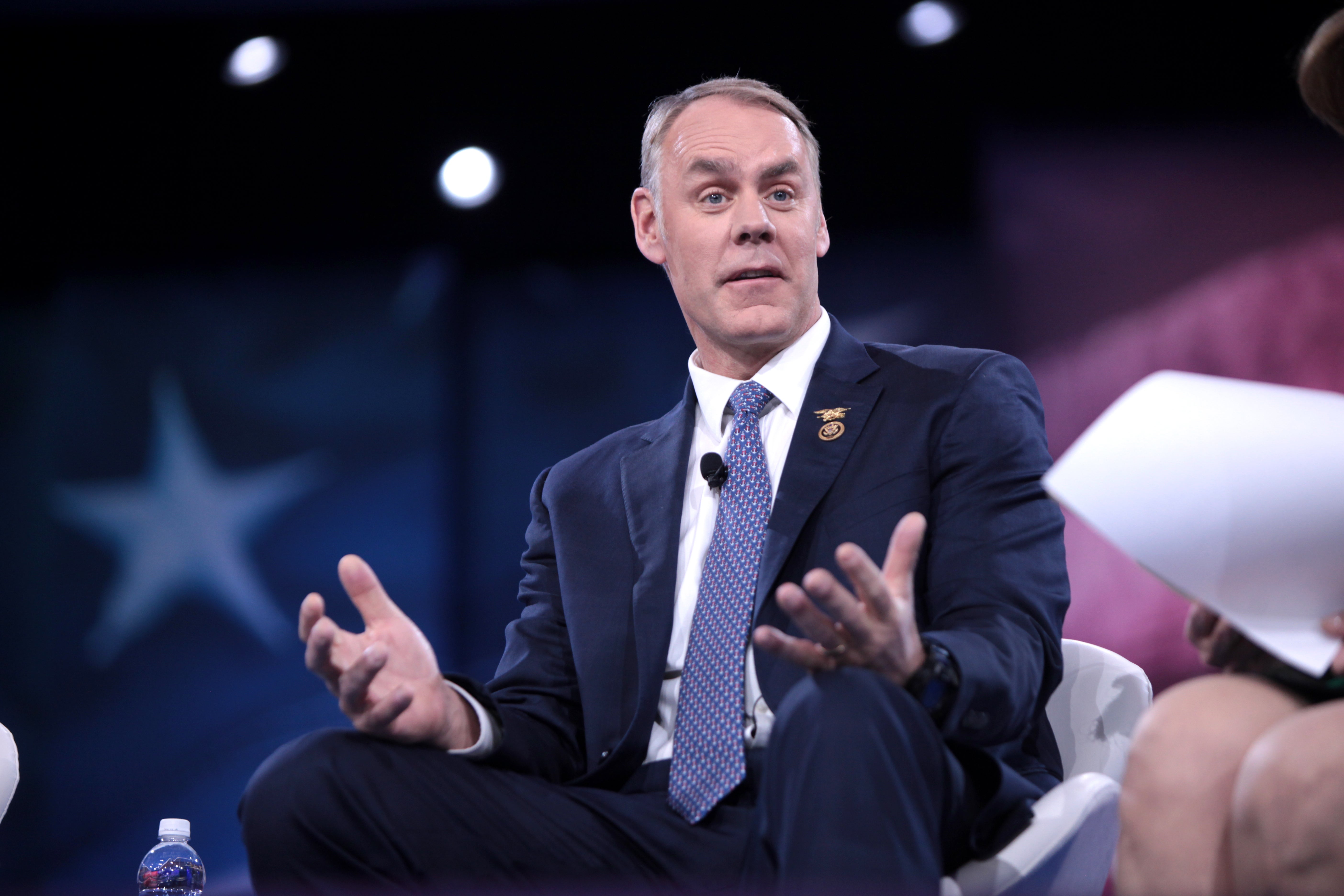A timeline of Zinke’s crusade against methane rules
 Here’s a newly-minted cabinet secretary charged with managing 20 percent of the American landscape on behalf of taxpayers and 567 Native American tribes – presented with an opportunity to save his stakeholders millions without lifting a finger.
Here’s a newly-minted cabinet secretary charged with managing 20 percent of the American landscape on behalf of taxpayers and 567 Native American tribes – presented with an opportunity to save his stakeholders millions without lifting a finger.
Interior Secretary Ryan Zinke, inexplicably, is rejecting this broad public relations win to instead go to bat for the worst actors in the oil and gas industry who only focus on their own short-term bottom line.
Zinke is trying with all his might to halt an Obama-era rule that will reduce wasteful leaking, venting and flaring of natural gas on federal and tribal lands.
On the lands in Secretary Zinke’s charge, oil and gas companies waste around $330 million worth of natural gas annually. That’s enough gas to meet the heating and cooking needs of 1.5 million American homes – or every home in Chicago.
Such waste on land administered by Interior’s Bureau of Land Management also results in the needless emission of methane, volatile organic compounds and hazardous air pollutants, all of which are threats to human health and the environment.
As this timeline shows, Zinke and his industry cronies have already struck out trying to reverse the methane waste rule. And yet, they refuse to go back to the dugout – despite what Congress and the courts have said. But first, some quick background.
January 2017: Court rejects methane rule challenge
Late last year, after final adoption of the anti-waste rule, oil and gas industry interests sued to stop it from taking effect. In January, a federal judge in normally industry-friendly Wyoming rejected their motion for an injunction – and for good reason.
The BLM is charged with protecting federal and tribal lands, and for ensuring appropriate return to taxpayers on such lands. Minimizing wasteful industry practices is a core obligation of the agency.
Strike one.
February 2017: Zinke votes “aye” to rescind
After the January court ruling, Congress stepped in to try get the job done at the behest of industry. Lawmakers attempted to rescind the waste prevention rule by invoking the Congressional Review Act.
Zinke, then still a Montana congressman, cast an “aye” vote – only to watch the Senate reject the roll-back in May. The Senate vote was another set-back for the industry’s campaign to block methane protections on BLM land.
Strike two.
By now, however, Zinke was Secretary of Interior and, together with his industry allies, still intent on reversion the waste prevention rule.
June 2017: Secretary Zinke suspends – loses in court
Less than four months into his new job with the Trump administration, Zinke directed his agency to unilaterally suspend many of the most important protections of the methane waste rule.
This without providing any opportunity for public comment and without considering the additional wasted gas or harmful air pollution that would result from such a delay.
A legal challenge of that attempted stay – led by the attorneys general of California and New Mexico and a broad coalition of environmental and conservation groups, including mine – was finally defeated in court in early October.
Strike three.
October 2017: Undeterred, Zinke seeks to delay rule
Still swinging. Zinke is now proposing an effort to stall implementation of the most critical anti-waste protections until January of 2019.
Unlike his predecessor who insisted on an exhaustive stakeholder process before adopting the rule, with hearings in Washington and in the West, Zinke has offered only a 30-day comment period on this attempted rollback. But there’s still time to tell the administration that this is out of line with what Americans want.
This last-ditch maneuvering to halt protections against methane pollution, and which at this point nobody but the secretary and his industry allies support, risks the waste of even more tax dollars.
Since 2013, more than $1.8 billion worth of American taxpayer-owned natural gas has been wasted largely due to avoidable leaks, flaring and intentional releases of methane.
It explains why more than 80 percent of Western voters, who live and work near public lands, support this rule, and why more than two-thirds of voters across the country want to keep it.
But Zinke, a Westerner himself, remains at bat for the worst of industry – no matter how voters feel or what makes good economic sense.
This post originally appeared on the EDF Voices blog.
Image source: Gage Skidmore, Flickr











